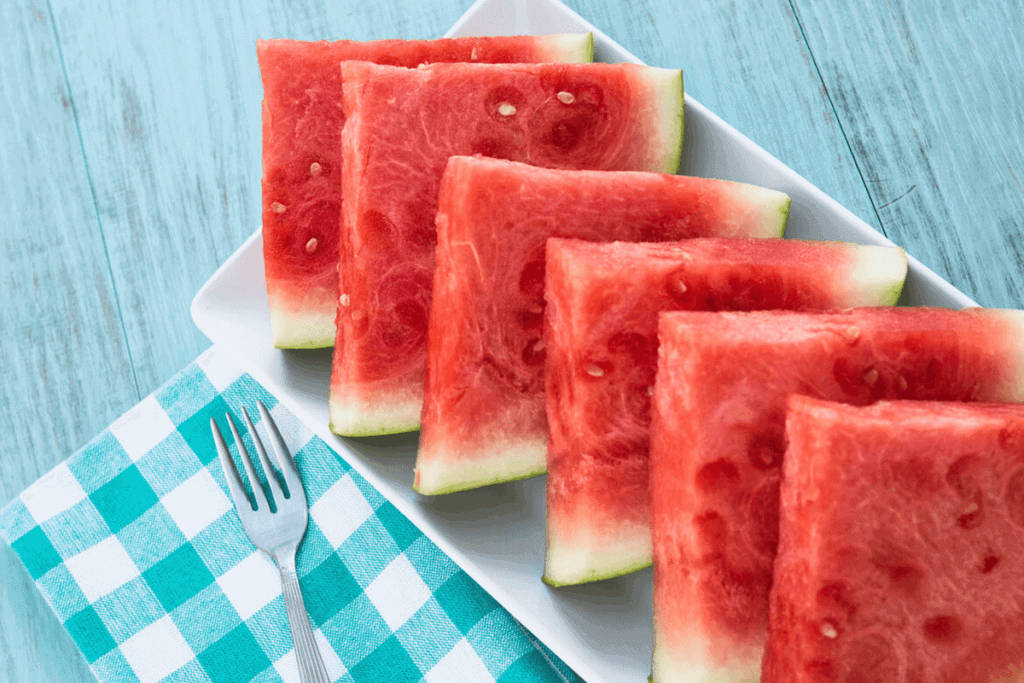Essential vitamins kids need
When it comes to nutrients, kids need an alphabet’s worth of vitamins! As they grow, it’s important that they get adequate amounts of the following vitamins to maintain strong bones, proper brain and immune function, and healthy energy levels.Vitamin A
This fat-soluble vitamin is important for healthy vision, a robust immune system, and strong bones. (4)(5)(6) Vitamin A comes in two forms—preformed vitamin A and provitamin A. Preformed A, can be found in animal products like meat and dairy, and it is the active form of the nutrient. Provitamin A is found in some plants and needs to be converted in the small intestine before it can be used by the body. (7) Beta-carotene is the best-known type of provitamin A. Daily amount needed: 300-600 mcg per day, depending on age. (8)
Did you know? When it comes to vitamin A, more isn’t always better. Very high intakes of preformed vitamin A may cause dizziness, headaches, nausea, coma, and even death. (9)
B vitamins
The vitamin Bs are a family of nutrients that play important roles throughout the body. For instance, B1 (thiamine) and B2 (riboflavin) are antioxidants that help convert the food your child eats into energy. (10)(11) B3 (niacin) aids in cell signaling, metabolism, and the production of DNA. (12) B5 (pantothenic acid) helps a child’s body make hormones and the fats that constitute cell membranes. (13) B6 (pyridoxine) is critical to the production of red blood cells and neurotransmitters. (14) B7 (biotin) is needed to metabolize fats and carbohydrates. It also regulates gene expression. (15) B9 (folate) is essential for cell growth and division, as well as the formation of red and white blood cells. (16) And B12 (cobalamin) supports brain function, DNA production, and the development of red blood cells. (17) Daily amount needed: Amounts range from 0.9 mcg to 12 mg per day depending on the B vitamin and the age of the child. (8) Food sources: The B vitamins can be found in meats, fish, liver, eggs, beans and legumes, and dairy. Signs of B vitamin deficiency in children: Developmental delays, neurological problems, irritability, lack of energy.Vitamin C
Vitamin C is an essential vitamin, which means the body can’t make it. Instead, this water-soluble antioxidant must be obtained through food. While it’s not a cure-all when your child comes down with the sniffles, vitamin C does support a healthy immune system. (18) It helps form and repair red blood cells, bones, tissues, and neurotransmitters. Vitamin C also strengthens blood vessels, minimizing bruises after a fall or scrape. (19) It also helps the body absorb another important nutrient, iron. (20) Daily amount needed: 15-75 mg per day, depending on age. (8)
Vitamin D
Dubbed the “sunshine vitamin,” vitamin D is important for the development of healthy bones. Studies show that D also supports a healthy immune response and may even influence brain development and behavior. (21) Although sunlight is the best source of vitamin D, many children are still deficient. (22) Since few foods provide this important nutrient, supplementation may be needed—especially for kids living in northern climates. Daily amount needed: 600 IU per day. (8) Food sources: Salmon, sardines, shrimp, tuna, egg yolks, mushrooms, and fortified foods like milk, orange juice, and some cereals. Signs of vitamin D deficiency in children: Muscle weakness and an increased risk of fractures.Did you know? Vitamin D isn’t an actual vitamin, but a pro-hormone. True vitamins can’t be made by the body and must be obtained through the foods we eat. Vitamin D can be synthesized by the body when it’s exposed to sunlight. (23)
Vitamin E
This fat-soluble antioxidant protects cells against free radical damage. It’s also critical for a healthy immune system. (24) Vitamin E is actually a blanket term for eight different naturally occurring nutrients—four tocopherols and four tocotrienols—and all of them are found in varying degrees in a healthy diet. Daily amount needed: 6-22 IU per day, depending on age. (8) Food sources: Sunflower and safflower oils, wheat germ, nuts and seeds, sweet potatoes, tomatoes, and green vegetables like spinach and broccoli. Signs of vitamin E deficiency in children: Muscle weakness, vision problems, numbness, or difficulty in walking.
Vitamin K
Vitamin K helps keep blood vessels flexible and is important for proper blood clotting. (25) Adequate levels have also been shown to improve bone mass and bone mineral content in kids. (26) There are two forms of vitamin K—K1 is found in leafy greens and other vegetables, and K2 comes from eggs, meat, and cheese. Daily amount needed: 2-75 mcg per day, depending on age. (8) Food sources: Green leafy vegetables, broccoli, Brussels sprouts, cabbage, cauliflower, blueberries, figs, meat, cheese, and eggs. Signs of vitamin K deficiency in children: Bruise easily, fussiness, nosebleeds, and dark or black stool.How to ensure your child is getting all their vitamins
Add interest to your child’s diet with a variety of nutrient-rich foods. Try introducing one new food weekly prepared in a creative, kid-friendly way. You can also make mealtime fun with finger foods or by making up a story about a novel fruit or vegetable. As your child grows, involve them in picking out and preparing new foods. It may only take a few small changes to prevent vitamin deficiencies and to kick off a lifetime of healthy eating.- Chao HC. Association of picky eating with growth, nutritional status, development, physical activity, and health in preschool children. Front Pediatr. 2018;6:22.
- Ogden CL, Carroll MD, Kit BK, et al. Prevalence of obesity and trends in body mass index among U.S. children and adolescents, 1999-2010. Journal of the American Medical Association.2012;307:483–90.
- Sahoo K, Sahoo B, Choudhury AK, et al.Childhood obesity: causes and consequences. J Family Med Prim Care. 2015;4(2):187-92.
- Saari JC.Vitamin A and vision. Subcell Biochem. 2016;81:231-59.
- Huang Z.Role of vitamin A in the immune system. J Clin Med. 2018;7(9):258.
- Tanumihardjo SA.Vitamin A and bone health: the balancing act. J Clin Densitom. 2013;16(4):414-9.
- Tang G.Bioconversion of dietary provitamin A carotenoids to vitamin A in humans. Am J Clin Nutr. 2010;91(5):1468S-73S.
- Dietary Guidelines for Americans.2015-2020. Eighth Edition. U.S. Department of Agriculture. 2015. pp. 97.
- Vitamin A Fact Sheet for Consumers. National Institutes of Health, Office of Dietary Supplements. Updated July 11, 2019.
- Marel JL, Franklin DS. Vitamin B1 (Thiamine). NCBI Bookshelf. 2019. Available at: https://www.ncbi.nlm.nih.gov/books/NBK482360/
- Thakur K, Tomar SK, Singh AK, et al. Riboflavin and health: A review of recent human research. Crit Rev Food Sci Nutr. 2017;57(17):3650-60.
- Meyer-Ficca M, Kirkland JB. Niacin. Adv Nutr. 2016;7(3):556-8.
- Panothenic acid. PubChem. U.S. National Library of Medicine. Available at: https://pubchem.ncbi.nlm.nih.gov/compound/pantothenic_acid
- Pyridoxine. PubChem. U.S. National Library of Medicine. Available at: https://pubchem.ncbi.nlm.nih.gov/compound/pyridoxine
- Zempleni J, Wijeratne SS, Hassan YI. Biotin. Biofactors. 2009;35(1):36-46.
- Bailey LB, Stover PJ, McNulty H, et al. Biomarkers of Nutrition for Development—Folate Review. J Nutr. 20155;145(7):1636S-80S.
- O’Leary F, Samman S. Vitamin B12 in Health and Disease. Nutrients. 2010;2(3):299-316.
- Huijskenes MJ, Walczak M, Koller N, et al. Technical advance: ascorbic acid induces development of double-positive T cells from human hematopoietic stem cells in the absence of stromal cells. J Leuko Biol. 2014;96(6):1165-75.
- May JM, Harrison FE. Role of vitamin C in the function of the vascular endothelium. Antioxid Redox Signal. 2013;19(17):2068-83.
- Mao X, Yao G. Effect of vitamin C supplementation on iron deficiency anemia in Chinese children. Biomed Environ Sci. 1992;5(2):125-9.
- Weydert JA. Vitamin D in children’s health. Children IBasel. 2014;1(2):208-26.
- Roh YE, Kim BR, Choi WB, et al. Vitamin D deficiency in children aged 6 to 12 years: Single center’s experience in Busan. Ann Pediatr Endocrinol Metab. 2016;21(3):149-54.
- Ware M. What are the health benefits of vitamin D? Medical News Today. 2017 Nov 13. Available at https://www.medicalnewstoday.com/articles/161618.php
- Vitamin E. National Institutes of Health Office of Dietary Supplements. Fact Sheet for Consumers. Available at: https://ods.od.nih.gov/factsheets/VitaminE-Consumer/
- Vitamin K. National Institutes of Health Office of Dietary Supplements. Fact Sheet for Consumers. Available at: https://ods.od.nih.gov/factsheets/VitaminK-Consumer/
- van Summeren MJH, van Coeverden SCCM, Schugers LJ, et al. Vitamin K status is associated with childhood bone mineral content. Br J Nutr. 2008;100(4):852-8.




